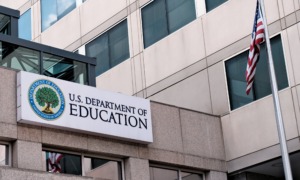Time for a pop quiz:
Earlier this month, police ruled the death of a five-month-old boy a homicide. The family was previously known to the state child welfare agency. How did the leader of the child welfare agency respond?
A) She fired anyone who had come anywhere near the case.
B) She didn’t have time to fire anyone who had come anywhere near the case because the governor fired her first.
C) She said the state had been doing too much to keep families together and from now on her workers would “err on the side of the child.”
D) She said nothing at all, claiming “confidentiality” rules prohibited all comment.
E) She said she would reserve judgment on the specific case until all the facts were in, but she would not allow the case to deter her from an agenda that includes reducing entries into care, implementing differential response, and removing barriers to kinship care. And, she said, there would be no foster-care panic – no rush to remove more children from their homes.
If you answered anything from A through D it’s understandable. After all, an answer like E is unheard-of in child welfare. No one is going to be that gutsy and put her job on the line for something as unpopular as helping children stay in their own families, just because it’s the best option for the overwhelming majority of those children.
So in 35 years of following child welfare, I’ve never heard the head of a child welfare agency give answer E – until now.
The state is Connecticut, and the answer came from the Commissioner of the state Department of Children and Families, Joette Katz. Right now, that makes her the gutsiest child welfare leader in America.
Katz was named to run DCF by a new Governor, Dannel Malloy, in January. She resigned from the State Supreme Court to take the job. She made clear from the start that she was determined to end the take-the-child-and-run mentality that had led to Connecticut taking away children at a rate more than 45 percent above the national average, when entries into care are compared to the number of impoverished children in each state.
To that end, she’s implementing differential response, in which families involved in cases believed to be less serious are offered voluntary help instead of a child abuse investigation. In a review of the scholarly literature concerning differential response, the Vera Institute of Justice found that every single study of the practice found no compromise of safety, and many found that safety improved.
Where children must be taken away, Katz won a change in state law allowing her to ease hypertechnical licensing requirements geared to middle-class strangers providing foster care, which make no sense for the often-poor grandparents and other relatives who are ready and willing to care for their own kin. Kinship care placements typically are more stable, better for children’s well-being and, most important, safer than what should properly be called “stranger care.”
Her legislative agenda also included tightening the definition of “neglect” to make it harder to confuse neglect with poverty.
“[Differential response is] going to keep people from getting into care. It’s a new way of looking at things. It’s much more family friendly,” Katz told the excellent online news site, Connecticut Mirror on June 10.
I posted a comment under the story, noting that the real challenge would come when a child “known to the system” died.
Sadly, that challenge came too soon. On the very day the Mirror story appeared, a five-month-old boy died. Four days later, the state medical examiner ruled the death a homicide. DCF had investigated the family twice.
This is when child welfare agency chiefs usually run for cover at best or reverse course at worst. But not Joette Katz. On June 16, she told Mirror reporter Jacqueline Rabe she’s not backing down from her agenda:
“I think in the past that’s been exactly the mistake, frankly,” Katz said. “A child dies and the next thing you know workers are getting thrown under the bus and 500 children get removed [from their homes] the next day because it’s a reaction to a tragedy. I think that’s the exact wrong way to behave.”
In 35 years of following child welfare, first as a reporter and now as an advocate, this is the most courageous response to a child welfare tragedy I’ve ever seen from the head of a child welfare agency anywhere in the country. Judge Katz has made clear that at her DCF, the children really do come first, regardless of the political price she may pay. Her boss, the governor, deserves credit for this kind of courage as well.
It’s been a long time coming.
The last progressive leader of Connecticut DCF was Rose Alma Senatore. She’d made significant progress in reducing reliance on foster care when she left office at the end of 1994.
A new governor, John Rowland, named a new commissioner, Linda Rossi. Four months later, there was a high-profile death of a child “known to the system.” Rowland and Rossi encouraged frontline workers to tear apart more families, and they did just that.
In the years since, several mediocre DCF leaders have come and gone. Rowland left office in disgrace, jailed for ten months in connection with a scandal over construction of a hideous juvenile detention center. And the state has never recovered from the foster care panic that followed the death in 1995.
Sixteen years later, it looks like Connecticut finally has someone in charge who will lead that recovery.
Richard Wexler is Executive Director of the National Coalition for Child Protection Reform, www.nccpr.org NCCPR’s report on Connecticut child welfare is available at: http://bit.ly/ftcARP





























